Pkin (signed - last copy)
by Jacek Fota
Photographs: Jacek Fota
Text: Agnieszka Rasmus-Zgorzelska
Publisher: Fundacja Centrum Architektury
112 pages
Pictures: 70
Year: 2015
ISBN: 978-83-937716-6-0
Comments: Hand made book, hardcover, 23.5 x 29.6 cm, first edition: 400 + 30 copies (only 150 for sale).
The Palace of Culture and Science in Warsaw – less and less a symbol of Stalinist domination, more and more an icon of the city. It evokes strong emotions all the while remaining largely unexplored, and as such a tad alien. At the time of planning, in 1952, the monumental structure was intended to transform the scale of Warsaw cityscape. The skyscrapers that now cluster to the west of the Palace compete with the building. Nonetheless, due to vast and empty parade grounds surrounding it, the Palace towers over Warsaw thus far unthreatened. After 1989 its demolition was repeatedly debated, albeit never seriously considered. In 2007 the building was finally listed.
The Palace was erected in the years 1952-55 by 3,500 Soviet builders on the bombed 19th century quarters in the city centre. The bulk of construction costs was covered by the Soviet government. Lev Rudnev, the Palace's chief designer, modelled the project on the Stalinist “Seven Sisters” skyscrapers in Moscow, themselves inspired by American architecture.
More books by Jacek Fota
more books tagged »Warsaw« | >> see all
-
The First March of Gentlemen (book + print)
by Rafal Milach
sold out -
The First March of Gentlemen (signed - last copy)
by Rafal Milach
sold out
more books tagged »architecture« | >> see all
-
BRUTAL (signed - last copy)
by Michal Luczak
sold out -
not far - special edition (signed+print+2booklets - last copy)
by Ildi Hermann
Euro 220 -
Swedish red
by Joakim Eneroth
Euro 28.80 -
A Place of One´s Own
by Hendrik Zeitler
Euro 58 -
Überlebt
by Kurt Hoerbst
Euro 69 -
Small God, Big City (signed)
by Michael Wolf
sold out
more books tagged »soviet« | >> see all
-
Venten på i går - Auf gestern warten (signed) - used copy
by Krass Clement
Euro 250 175.00 -
Gandras
by Jasper Bastian
Euro 95 -
Inshallah
by Dima Gavrysh
Euro 46 -
Rules of the Road
by Vitaly Fomenko
sold out -
Wonderland: A Fairytale of a Soviet Monolith (signed)
by Jason Eskenazi
sold out -
Soviet Bus Stops Volume II
by Christopher Herwig
sold out
more books tagged »post-Soviet« | >> see all
-
Street Encounters (last copy)
by Evgeny Vasin
Euro 95 -
Feud (book + print)
by Olga Matveeva
Euro 100 -
7 Rooms (last copy)
by Rafal Milach
sold out -
Forget Your Past (signed)
by Nikola Mihov
sold out -
At the Border (last copy)
by Sputnik Photos
Euro 125 -
Soviet Bus Stops
by Christopher Herwig
sold out
more books tagged »Polish« | >> see all
-
Black Sea of Concrete (signed + print - last copy)
by Rafal Milach
sold out -
KARCZEBY
by Adam Panczuk
sold out -
7 Rooms (signed + print)
by Rafal Milach
Euro 770 -
Swell (last copy)
by Mateusz Sarello
sold out -
In the Car with R (signed + print - last copy)
by Rafal Milach
Euro 770 -
Distant Place
by Sputnik Photos
Euro 75
more books tagged »interior« | >> see all
-
Timekeepers (signed)
by Matjaž Tančič
sold out -
Lost in Time
by Marc Theis
Euro 40 -
My Place (signed)
by Dina Oganova
sold out -
What Was Home
by Dileep Prakash
sold out -
Ästhetik des Aufgebens
by Sebastian Weise
Euro 22 -
After the Thaw (last copy - review copy)
by Tomoko Yoneda
sold out
Random selection from the Virtual bookshelf josefchladek.com
Pkin (signed - last copy)
by Jacek Fota
Photographs: Jacek Fota
Text: Agnieszka Rasmus-Zgorzelska
Publisher: Fundacja Centrum Architektury
112 pages
Pictures: 70
Year: 2015
ISBN: 978-83-937716-6-0
Comments: Hand made book, hardcover, 23.5 x 29.6 cm, first edition: 400 + 30 copies (only 150 for sale).
The Palace of Culture and Science in Warsaw – less and less a symbol of Stalinist domination, more and more an icon of the city. It evokes strong emotions all the while remaining largely unexplored, and as such a tad alien. At the time of planning, in 1952, the monumental structure was intended to transform the scale of Warsaw cityscape. The skyscrapers that now cluster to the west of the Palace compete with the building. Nonetheless, due to vast and empty parade grounds surrounding it, the Palace towers over Warsaw thus far unthreatened. After 1989 its demolition was repeatedly debated, albeit never seriously considered. In 2007 the building was finally listed.
The Palace was erected in the years 1952-55 by 3,500 Soviet builders on the bombed 19th century quarters in the city centre. The bulk of construction costs was covered by the Soviet government. Lev Rudnev, the Palace's chief designer, modelled the project on the Stalinist “Seven Sisters” skyscrapers in Moscow, themselves inspired by American architecture.
More books by Jacek Fota
more books tagged »Warsaw« | >> see all
-
The First March of Gentlemen (book + print)
by Rafal Milach
sold out -
The First March of Gentlemen (signed - last copy)
by Rafal Milach
sold out
more books tagged »architecture« | >> see all
-
BRUTAL (signed - last copy)
by Michal Luczak
sold out -
not far - special edition (signed+print+2booklets - last copy)
by Ildi Hermann
Euro 220 -
Swedish red
by Joakim Eneroth
Euro 28.80 -
A Place of One´s Own
by Hendrik Zeitler
Euro 58 -
Überlebt
by Kurt Hoerbst
Euro 69 -
Small God, Big City (signed)
by Michael Wolf
sold out
more books tagged »soviet« | >> see all
-
Venten på i går - Auf gestern warten (signed) - used copy
by Krass Clement
Euro 250 175.00 -
Gandras
by Jasper Bastian
Euro 95 -
Inshallah
by Dima Gavrysh
Euro 46 -
Rules of the Road
by Vitaly Fomenko
sold out -
Wonderland: A Fairytale of a Soviet Monolith (signed)
by Jason Eskenazi
sold out -
Soviet Bus Stops Volume II
by Christopher Herwig
sold out
more books tagged »post-Soviet« | >> see all
-
Street Encounters (last copy)
by Evgeny Vasin
Euro 95 -
Feud (book + print)
by Olga Matveeva
Euro 100 -
7 Rooms (last copy)
by Rafal Milach
sold out -
Forget Your Past (signed)
by Nikola Mihov
sold out -
At the Border (last copy)
by Sputnik Photos
Euro 125 -
Soviet Bus Stops
by Christopher Herwig
sold out
more books tagged »Polish« | >> see all
-
Black Sea of Concrete (signed + print - last copy)
by Rafal Milach
sold out -
KARCZEBY
by Adam Panczuk
sold out -
7 Rooms (signed + print)
by Rafal Milach
Euro 770 -
Swell (last copy)
by Mateusz Sarello
sold out -
In the Car with R (signed + print - last copy)
by Rafal Milach
Euro 770 -
Distant Place
by Sputnik Photos
Euro 75
more books tagged »interior« | >> see all
-
Timekeepers (signed)
by Matjaž Tančič
sold out -
Lost in Time
by Marc Theis
Euro 40 -
My Place (signed)
by Dina Oganova
sold out -
What Was Home
by Dileep Prakash
sold out -
Ästhetik des Aufgebens
by Sebastian Weise
Euro 22 -
After the Thaw (last copy - review copy)
by Tomoko Yoneda
sold out
Random selection from the Virtual bookshelf josefchladek.com
Pkin (signed - last copy)
by Jacek Fota
Photographs: Jacek Fota
Text: Agnieszka Rasmus-Zgorzelska
Publisher: Fundacja Centrum Architektury
112 pages
Pictures: 70
Year: 2015
ISBN: 978-83-937716-6-0
Comments: Hand made book, hardcover, 23.5 x 29.6 cm, first edition: 400 + 30 copies (only 150 for sale).
The Palace of Culture and Science in Warsaw – less and less a symbol of Stalinist domination, more and more an icon of the city. It evokes strong emotions all the while remaining largely unexplored, and as such a tad alien. At the time of planning, in 1952, the monumental structure was intended to transform the scale of Warsaw cityscape. The skyscrapers that now cluster to the west of the Palace compete with the building. Nonetheless, due to vast and empty parade grounds surrounding it, the Palace towers over Warsaw thus far unthreatened. After 1989 its demolition was repeatedly debated, albeit never seriously considered. In 2007 the building was finally listed.
The Palace was erected in the years 1952-55 by 3,500 Soviet builders on the bombed 19th century quarters in the city centre. The bulk of construction costs was covered by the Soviet government. Lev Rudnev, the Palace's chief designer, modelled the project on the Stalinist “Seven Sisters” skyscrapers in Moscow, themselves inspired by American architecture.
More books by Jacek Fota
more books tagged »Warsaw« | >> see all
-
The First March of Gentlemen (book + print)
by Rafal Milach
sold out -
The First March of Gentlemen (signed - last copy)
by Rafal Milach
sold out
more books tagged »architecture« | >> see all
-
BRUTAL (signed - last copy)
by Michal Luczak
sold out -
not far - special edition (signed+print+2booklets - last copy)
by Ildi Hermann
Euro 220 -
Swedish red
by Joakim Eneroth
Euro 28.80 -
A Place of One´s Own
by Hendrik Zeitler
Euro 58 -
Überlebt
by Kurt Hoerbst
Euro 69 -
Small God, Big City (signed)
by Michael Wolf
sold out
more books tagged »soviet« | >> see all
-
Venten på i går - Auf gestern warten (signed) - used copy
by Krass Clement
Euro 250 175.00 -
Gandras
by Jasper Bastian
Euro 95 -
Inshallah
by Dima Gavrysh
Euro 46 -
Rules of the Road
by Vitaly Fomenko
sold out -
Wonderland: A Fairytale of a Soviet Monolith (signed)
by Jason Eskenazi
sold out -
Soviet Bus Stops Volume II
by Christopher Herwig
sold out
more books tagged »post-Soviet« | >> see all
-
Street Encounters (last copy)
by Evgeny Vasin
Euro 95 -
Feud (book + print)
by Olga Matveeva
Euro 100 -
7 Rooms (last copy)
by Rafal Milach
sold out -
Forget Your Past (signed)
by Nikola Mihov
sold out -
At the Border (last copy)
by Sputnik Photos
Euro 125 -
Soviet Bus Stops
by Christopher Herwig
sold out
more books tagged »Polish« | >> see all
-
Black Sea of Concrete (signed + print - last copy)
by Rafal Milach
sold out -
KARCZEBY
by Adam Panczuk
sold out -
7 Rooms (signed + print)
by Rafal Milach
Euro 770 -
Swell (last copy)
by Mateusz Sarello
sold out -
In the Car with R (signed + print - last copy)
by Rafal Milach
Euro 770 -
Distant Place
by Sputnik Photos
Euro 75
more books tagged »interior« | >> see all
-
Timekeepers (signed)
by Matjaž Tančič
sold out -
Lost in Time
by Marc Theis
Euro 40 -
My Place (signed)
by Dina Oganova
sold out -
What Was Home
by Dileep Prakash
sold out -
Ästhetik des Aufgebens
by Sebastian Weise
Euro 22 -
After the Thaw (last copy - review copy)
by Tomoko Yoneda
sold out
Random selection from the Virtual bookshelf josefchladek.com

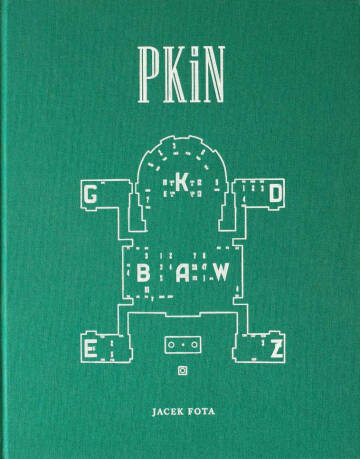












































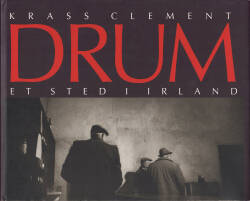
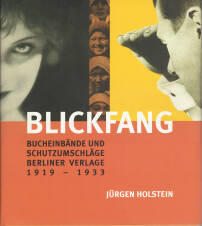
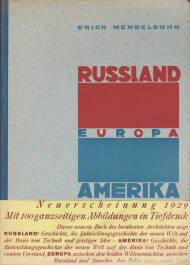



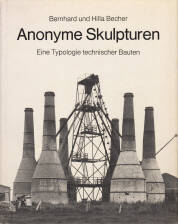
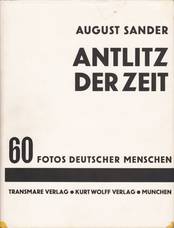

_;jpg?c=70d3e1cb4e1f8d4fe0d9cbd819b7b4ec)
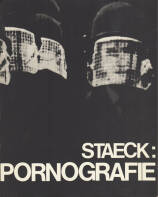

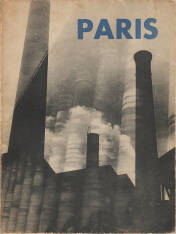
;jpg?c=da946a13da0648642693b2384b444174)